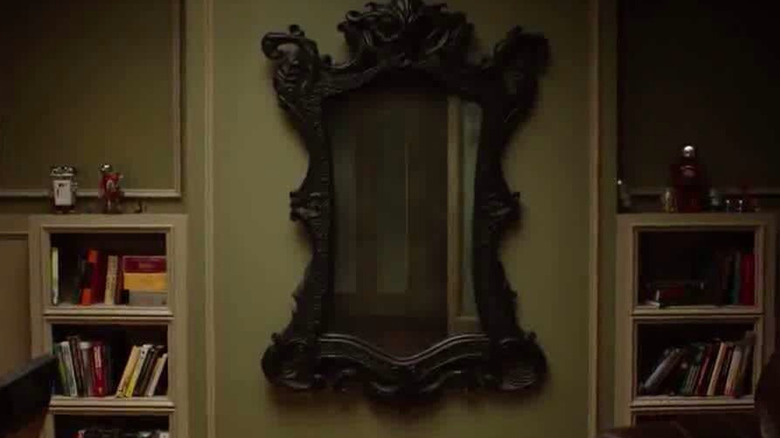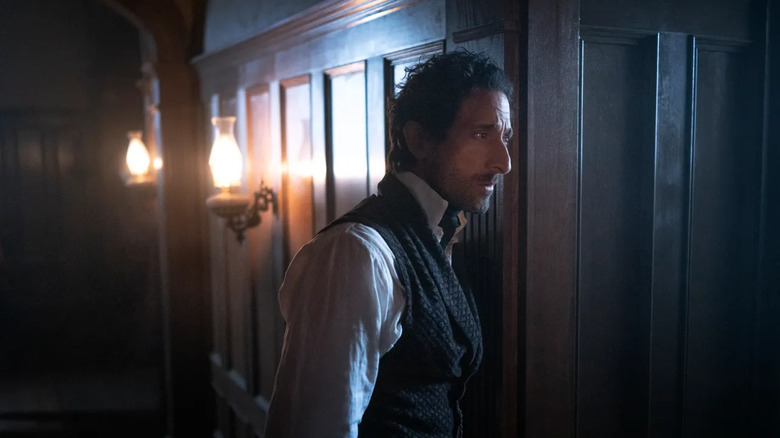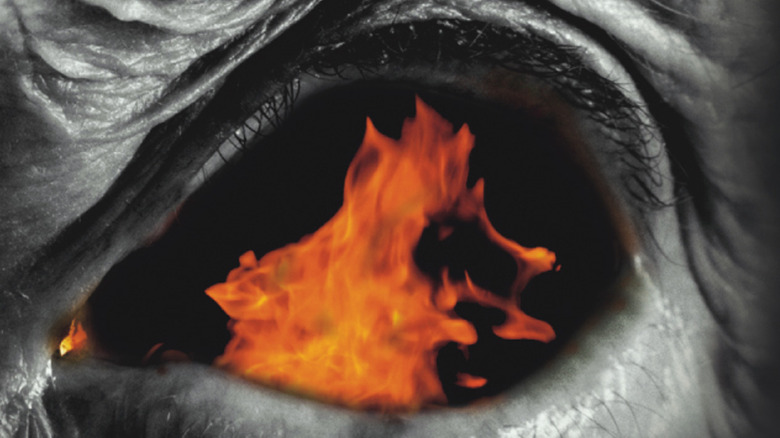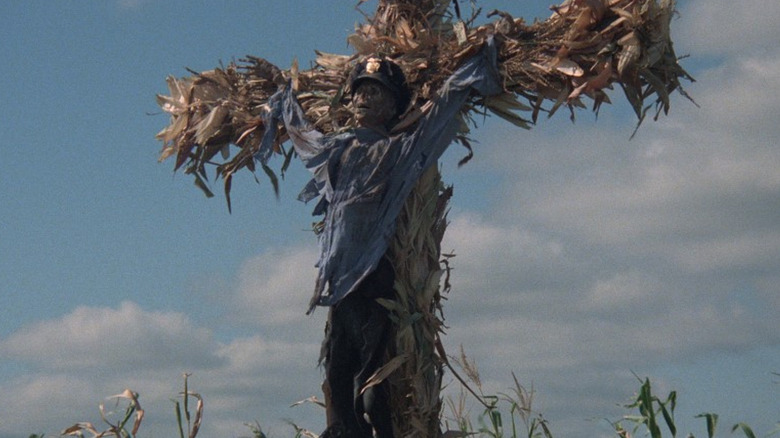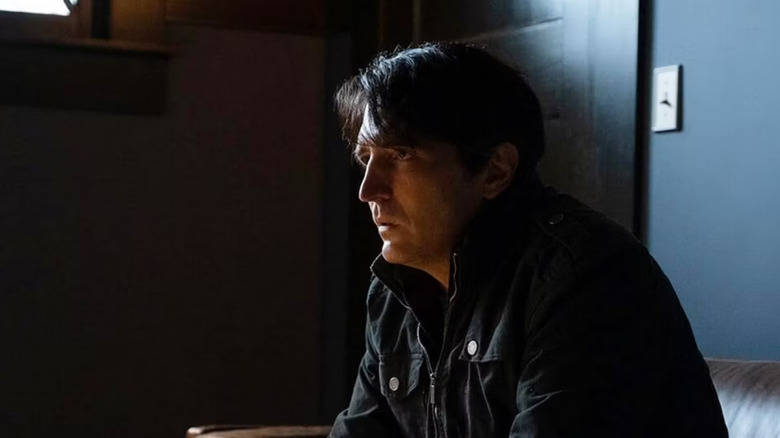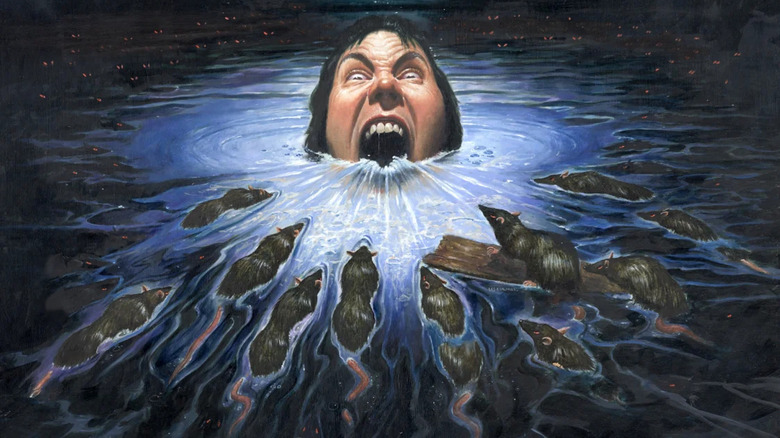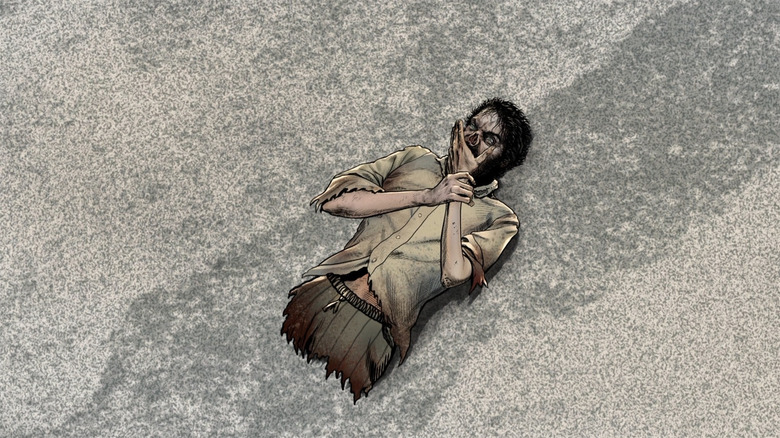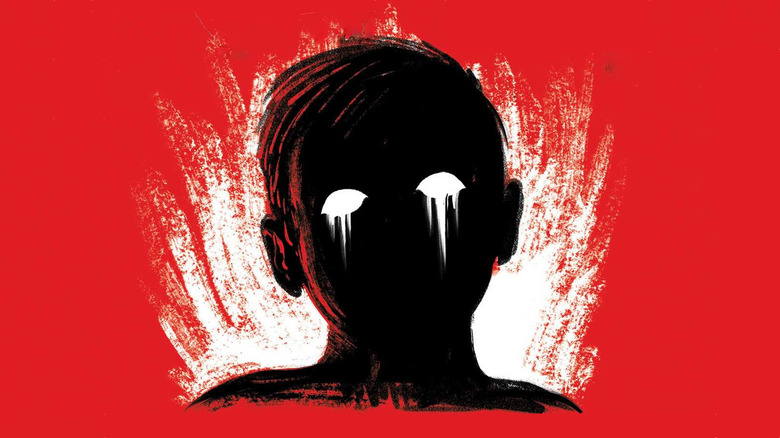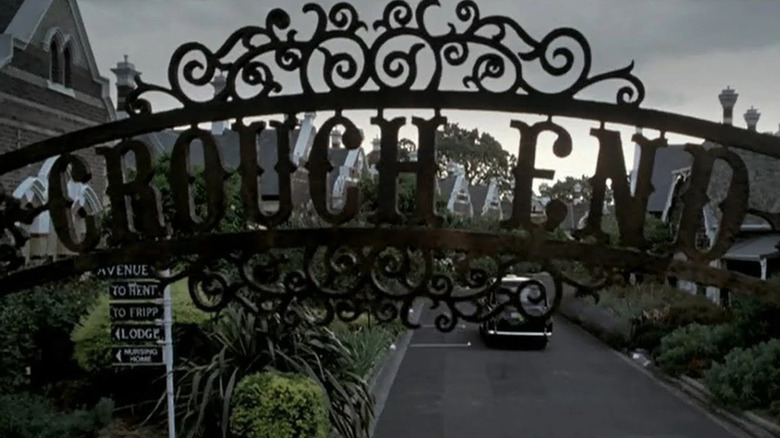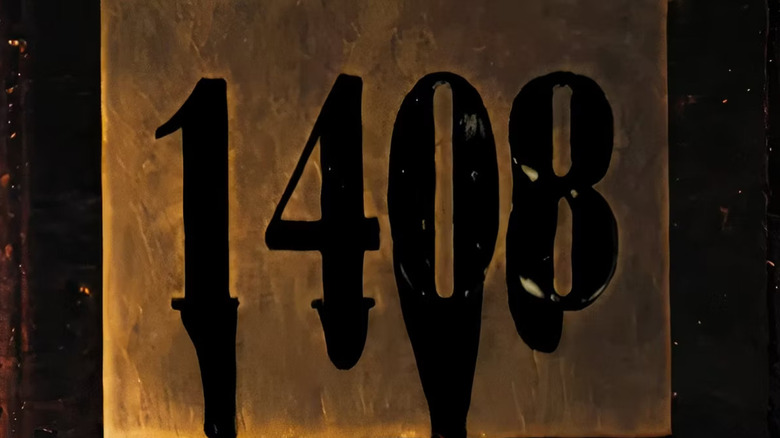The 10 Best Stephen King Short Stories, Ranked
I recently ranked the 10 best Stephen King books ever, and had an absolute blast. I've been a huge Stephen King nerd for almost my entire life, and I loved revisiting some of his best works as I researched the list. Since I got the best of King's books out of the way, the next logical step was to go ahead and rank the 10 best Stephen King short stories. However, this proved to be a far more daunting task. King has a lot of short stories, folks, and the bulk of them are pretty damn great. Which meant whittling the list down to 10 specific titles was a little tricky for me, but I did my best!
And just to make this more difficult on myself, I went ahead and laid down some ground rules that I almost immediately regretted. I wanted to specifically focus on short stories here, which means I decided to exclude the longer novellas. So you won't find anything from "Different Seasons," "Four Past Midnight," or "Full Dark, No Stars" on here, as those books are all comprised of novellas. That also means "The Mist," one of King's most famous works, won't be making an appearance on the list, since that's very much a novella, not a short story. This decision frustrated me, as I really wanted to include King's story "N.," but at over 100 pages, that's also clearly a novella. Other stories I wanted to include, but didn't, due to their novella classifications: the Edgar Allan Poe-inspired "Dolan's Cadillac" and the more recently published "The Answer Man." These are great stories, but I remained determined to adhere to the silly rule I made for myself! Now that we've got that out of the way, let's take a look at the 10 best Stephen King short stories, ranked.
10. The Reaper's Image
This is probably the earliest Stephen King story on the list — he originally wrote it when he was 18, then revised it a little for his 1985 collection "Skeleton Crew." "The Reaper's Image" is a simple but spooky little tale about a cursed mirror, following a fussy, rude antique dealer who heads to a museum to buy a rare item known as the Delver's Mirror. While there, the museum's curator recounts the long, creepy history of the mirror — it seems that anyone who looks into it too long ends up disappearing. In fact, a high school kid who recently visited the museum up and vanished after taking a glance at the glass. Just to make things extra scary, legend has it that people who look into the mirror will see the image of the grim reaper standing beside them. The antique dealer doesn't believe any of this nonsense and laughs it all off as superstition. I bet you can guess where this is going, and how things turn out for him. While "The Reaper's Image" isn't the most sophisticated of King's stories, it's wonderfully atmospheric and generates scares without clobbering you over the head. I'm a sucker for scary stories about cursed and/or haunted objects, so I'm a big fan of this tale. I also wouldn't be surprised if noted King fan Mike Flanagan drew inspiration from this story when he made his effective haunted mirror movie "Oculus."
9. Jerusalem's Lot
As the title suggests, "Jerusalem's Lot" is connected to King's vampire novel "Salem's Lot" (Jerusalem's Lot is the full name of the town, but everyone abbreviates it to 'Salem's Lot in the book). But the connections are loose and used only to suggest that Salem's Lot has always been a bad place, even before a vampire moved in. Here, King spins a slow-burning tale set in the 1850s. In a series of letters, a wealthy man named Charles Boone recounts how he's just moved into his ancestral home in the small Maine town of Preacher's Corners. At night, Charles thinks he hears scratching in the walls, which he attributes to rats. As the story unfolds, Charles learns of the nearby abandoned town of Jerusalem's Lot, a supposedly cursed place that has a deep, dark secret. All the locals think Charles' house is haunted, and they also think he's crazy for living there. Soon, it becomes clear why. Loaded with religious symbolism and drenched in gothic horror, "Jerusalem's Lot" is charmingly spooky; the type of story to be read by a roaring fire on a dark and stormy night. It also inspired the seemingly forgotten, now-canceled Epix series "Chapelwaite."
8. The Man in the Black Suit
"The Man in the Black Suit" isn't just a Stephen King story, it's an award-winning Stephen King story! It won the 1995 O. Henry Award for Best Short Fiction. For many years, King was considered by snobs to be little more than a guy who churned out pulp. Sure, it was really successful pulp, but folks turned up their noses at King and his stories about killer dogs, haunted hotels, and sewer clowns. But King has stuck around so long that a curious thing happened: people started to take him seriously. When I say "people," I don't mean his nerdy fans (like me!), who have always held him close to their hearts. I mean the more "sophisticated" types who had previously looked down at King. Part of that rehabilitation came in the wake of King's 2000 non-fiction book "On Writing," which showcased that, yes, this dude really knows a thing or two about writing. But "The Man in the Black Suit" winning the O. Henry Award back in '95 predates that, suggesting that the tide was starting to turn even back then. In any case, the story is indeed damn good — although it's also a little silly when you start to think long and hard about it.
In "The Man in the Black Suit," a very old man named Gary recounts how he met and was almost eaten by the Devil back in 1914. At that time, Gary was just a little kid, and according to his story, the Devil is a scary man in a three-piece black suit with fire in his eyes. As I said, this is somewhat silly when you start to break it all down (the Devil also has really sharp teeth! And smells bad!), but King is so good at what he does that you really buy into it all thanks to the quality of his writing. And ultimately, the story really isn't about the Devil — it's about life, death, and everything in between.
7. Children of the Corn
These days, when folks hear the title "Children of the Corn" they likely think of the seemingly endless, and genuinely terrible film franchise. I won't sit here and defend the films — honestly, none of them, not even the first one, are very good, and most of them are awful. But King's original short story, first published in the pages of Penthouse, is legit creepy and will make you forget all about those garbage movies. In the story, feuding married couple Burt and Vicky are driving through Nebraska when they end up running over a kid in the road. But the car accident is the least of this dead child's problems: when they get out of the car, the couple discover that his throat was slit before he ended up face to face with the front bumper of their vehicle.
Burt and Vicky take the dead body to the nearest town, an off-the-map place called Gatlin. Gatlin seems abandoned at first, but soon the couple finds that the entire town is populated by creepy kids who have killed off the adults. These kids worship a demonic god known as He Who Walks Behind the Rows, and they demand human sacrifices. What makes the "Children of the Corn" story so effective and, yes, scary, is that King relies on our minds to do most of the work. He only gives us a tiny bit of information about what's going on in Gatlin, and our imaginations fill in the rest, with horrifying results.
6. The Boogeyman
Stephen King's "The Boogeyman" was adapted to the screen in 2023, but the original short story that inspired the film is much different, and far scarier. In the story, which was first published in the magazine Cavalier and then added to the King collection "Night Shift," a man named Lester Billings sits in a psychiatrist's office and recounts the tragic tale behind the deaths of his three young children. While the deaths have been attributed to explainable causes like SIDS, or sudden infant death syndrome, Lester claims the boogeyman actually murdered his kids. King makes Lester an incredibly unsympathetic character who cruelly talks about hitting his infant children and wanting to beat his wife, and the reader starts to suspect that this vile man is lying and that maybe he killed the kids himself. But no — the final sentences of the story confirm that Lester is telling the truth. The boogeyman is very real! While the movie is an enjoyable scarefest, the story is much more disturbing and unsettling, primarily because King is dealing with bleak subject matter that other authors might typically shy away from. King likes and understands kids, but he's also never been shy about violently killing them in his writing.
5. Graveyard Shift
Stephen King may be a famous, wealthy writer now, but it's important to remember that once upon a time, he was a poor English teacher struggling to pay the bills and feed his three kids. King's early stories are loaded with working class stiffs, because he used to be a working class stiff himself — before he got the teaching gig, he worked in an industrial laundry (a bit of history that inspired his "killer laundry folding machine" story "The Mangler"). One of his best working class stiff stories is "Graveyard Shift," a nasty piece of work about filth, grime, and rat monsters. Set in a run-down Maine textile mill, the story follows a group of men working at the mill who are forced into cleaning duty. It's a dirty job, but the men can't say no because they need a paycheck — and that's something I think we can all relate to. At one point or another, we've all traded our dignity to pay the bills. Thus is the nature of capitalism.
The clean-up crew descends into the bowels of the mill and discovers rats, rats, and more rats. But the deeper they go, the more mutated and monstrous the rats become. Down here in the slimy darkness, the rats have evolved to become huge, winged, and hungry. It's wonderfully gross, icky stuff, but as usual, King makes it work because he's great at dropping realistic characters into unrealistic situations.
4. Survivor Type
"Survivor Type" is probably the grossest thing Stephen King has ever written (it's also his personal favorite short story, or so he told Stephen Colbert in 2021). I don't consider myself squeamish, but reading this thing makes my skin crawl (complimentary). The story is so gross that King actually had a hard time selling it to magazines — it first appeared in a 1982 horror anthology book before popping up in King's short story collection "Skeleton Crew." In "Survivor Type," a shady surgeon named Richard Pine ends up stranded on a small, empty island in the Pacific Ocean after the cruise ship he's on sinks. Written in the first person in the form of a diary, the story follows Richard as he attempts to survive on the island with seemingly no hope of rescue. With no food, Richard starts killing seagulls and insects to eat. Eventually, though, those sources of food run out, and Richard gets desperate. After he badly fractures his ankle, Richard comes up with a brilliant idea: he'll cut his foot off and eat it. From there, "Survivor Type" descends into gory lunacy as Richard methodically starts cutting off pieces of his body and eating them to survive. It's nasty as hell, and while some of it strains credulity, the end result is so disgusting that you can't help but admire it all.
3. The Jaunt
A sci-fi horror story with a hell of a payoff, "The Jaunt" is set in both the 24th century and the late 1980s. We learn that a mode of teleportation, known as "Jaunting," has been invented to transport people across vast distances. As a family prepares to Jaunt off to Mars in the 24th century, the father tells his children the story of how teleportation was discovered/created by a scientist in 1987 (for reference, "The Jaunt" was first published in 1981, so '87 was the not-too-distant future). Jaunting works perfectly ... with one catch: anyone being Jaunted has to be asleep, so travelers are given general anaesthesia before the trip. If you're awake during the Jaunt, well, let's just say ... bad things happen. Really bad things.
2. Crouch End
H.P. Lovecraft has influenced many modern horror writers, and Stephen King is no exception. King's most Lovecraftian tale is probably "Crouch End," which he wrote for the book "New Tales of the Cthulhu Mythos" before it was included in his short story collection "Nightmares & Dreamscapes." Crouch End is a real place in North London, but in King's hands, it becomes the gateway to an alternate universe full of unspeakable horrors. The tale kicks off when frantic American woman Doris Freeman bursts into a small police station late one night near Crouch End, claiming her husband is missing. Two cops sit Doris down and she tells the tale of how she and her husband, Lonnie, got lost while trying to locate the home of one of Lonnie's business associates. They didn't just make a wrong turn, however. Somehow, they slipped out of our world and into ... somewhere else. In the best Lovecraft tradition, the specifics are vague and mysterious — explaining things would rob them of their power. What makes "Crouch End" so effective is the atmosphere King creates; we get a real sense of place here, and the subtle ways everything seems slightly off as the sun begins to set and Doris and Lonnie wander deeper into danger. I keep waiting for someone to turn this into a really scary movie. As of now, the only adaptation of "Crouch End" comes to us via an episode of the TNT miniseries "Nightmares & Dreamscapes: From the Stories of Stephen King," and sadly, that adaptation kind of stinks.
1. 1408
One of the things that makes "1408" so remarkable is the fact that it was never intended to be a "real" story. King initially wrote the first few pages to serve as an example of his writing process for his non-fiction book "On Writing." And, as he explains in the book "Stephen King Goes to the Movies," "I had done my haunted hotel story ('The Shining') and ordinarily feel no urge to chew my cabbage twice." However, King found himself so interested in the main character — a cynical writer named Mike Enslin — that he decided to sit down and finish the story after all. The end result: his best short story, at least according to this list (feel free to judge me; I stand by this ranking!).
In "1408," Mike Enslin is a writer who has found success penning books about supposedly haunted locations ("10 Nights in 10 Haunted Graveyards," "10 Nights in 10 Haunted Castles," etc.). Mike is good at what he does, but he doesn't actually believe in ghosts, primarily because in all his years writing about them, he's never seen one. Mike's new book is about haunted hotels, and he's now come to the Hotel Dolphin in New York City to stay in the supposedly haunted room 1408. But the author has experienced an unusual amount of pushback from the hotel's manager, Mr. Olin, who really does not want Mike to stay in that damn room. Mike is not to be deterred, however, and checks into the room and almost immediately goes crazy when it becomes clear that something is indeed very wrong with 1408. Interestingly enough, King goes out of his way to say that the room isn't actually haunted — not by ghosts, at least. Instead, some sort of otherworldly force holds sway over 1408, and Mike is in serious trouble. "1408" is a masterclass in mood setting. The scariest parts of the story aren't about the horrors Mike encounters in the room. Insead, the dread arises from a lengthy table setting scene, in which Mike and Olin sit in Olin's office and talk about the sordid history of the room. Before Mike has even stepped foot into 1408, King has conditioned us to expect something scary.

